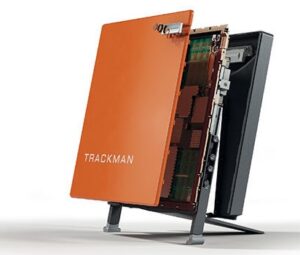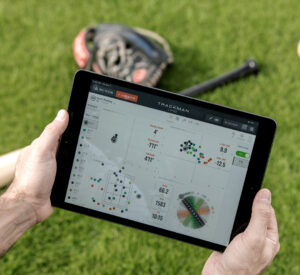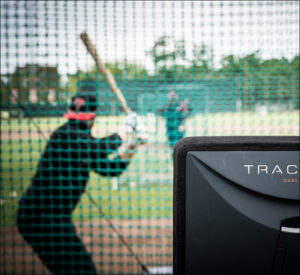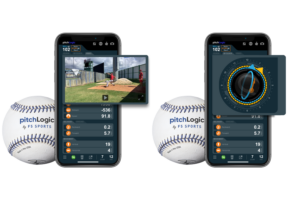 In the modern era of baseball, technology has revolutionized the way the game is played, coached, and analyzed. Among the most significant advancements are pitch tracking technologies, which provide in-depth data and insights into a pitcher's performance. Technologies like Trackman and Rapsodo have become essential tools for teams and players at all levels, from Major League Baseball (MLB) to amateur leagues. These technologies have transformed traditional coaching methods, allowing for a data-driven approach that enhances player development and game strategy. As a result, baseball has entered a new era where precise metrics and advanced analytics guide decision-making on and off the field.
In the modern era of baseball, technology has revolutionized the way the game is played, coached, and analyzed. Among the most significant advancements are pitch tracking technologies, which provide in-depth data and insights into a pitcher's performance. Technologies like Trackman and Rapsodo have become essential tools for teams and players at all levels, from Major League Baseball (MLB) to amateur leagues. These technologies have transformed traditional coaching methods, allowing for a data-driven approach that enhances player development and game strategy. As a result, baseball has entered a new era where precise metrics and advanced analytics guide decision-making on and off the field.
The integration of pitch tracking systems into baseball has not only improved player performance but also revolutionized scouting and talent identification. Coaches and scouts can now analyze a player's mechanics, pitch effectiveness, and consistency with unprecedented detail. This granular level of analysis helps in tailoring training programs to individual needs, identifying potential injuries before they become serious, and optimizing in-game strategies. Moreover, these technologies have democratized access to high-level analytics, making it possible for amateur and youth programs to benefit from insights that were once reserved for professional teams. This article will delve into the development, impact, and future of these technologies, providing a comprehensive guide to their applications, benefits, and limitations.
Trackman Baseball: Pitch Tracking Technologies
 Development and Impact
Development and Impact
Trackman, originally developed for golf, has become a cornerstone of baseball analytics. Launched in the early 2000s, Trackman utilizes Doppler radar technology to track the trajectory and spin of baseballs in real-time. This innovation has profoundly impacted how teams evaluate and develop pitchers, offering precise data that was previously unavailable.
Technical Specifications
Trackman's system is renowned for its accuracy, capturing data at thousands of frames per second. Key features include:
- Pitch Velocity: Measures the speed of the ball.
- Spin Rate: Tracks the ball's spin to analyze pitch effectiveness.
- Release Point: Captures the exact point where the pitcher releases the ball.
- Pitch Movement: Analyzes the horizontal and vertical break of pitches.
Applications
 Use in Major League Baseball (MLB)
Use in Major League Baseball (MLB)
Trackman is widely used in MLB for scouting, player development, and in-game strategy. Teams leverage its data to make informed decisions about pitching rotations, bullpen usage, and game tactics.
Use in Amateur and Collegiate Baseball
Colleges and amateur teams also utilize Trackman to enhance player development. The technology helps coaches identify strengths and weaknesses, tailoring training programs to individual needs.
Benefits: Pitch Tracking Technologies
Accuracy and Reliability
Trackman's precision provides coaches and players with reliable data, essential for making informed decisions. The ability to track every aspect of a pitch offers insights that were previously impossible to obtain.
Enhanced Player Performance and Scouting
By analyzing Trackman data, scouts and coaches can identify promising talents and fine-tune a player's mechanics. This data-driven approach leads to improved performance and a deeper understanding of the game.
Challenges and Limitations
Cost and Accessibility
One of the primary challenges of Trackman is its cost, making it less accessible to smaller programs and teams with limited budgets.
Limitations in Specific Environments
Trackman's effectiveness can be compromised in certain environments, such as outdoor settings with adverse weather conditions.
Latest Innovations
Trackman continues to evolve, with recent updates including enhanced tracking capabilities and integration with other data platforms. These innovations ensure that Trackman remains at the forefront of baseball analytics.
Future Prospects
The future of Trackman technology looks promising, with potential advancements including more affordable units and enhanced portability. These developments could make Trackman more accessible to a broader range of users.
Comparative Analysis
When compared to other tracking technologies, Trackman stands out for its accuracy and comprehensive data collection. However, its high cost and specific setup requirements can be limiting factors.
User Guides or Tutorials
To use Trackman effectively:
- Setup: Install the radar unit and connect it to a computer or mobile device.
- Calibration: Ensure the system is properly calibrated for accurate data capture.
- Data Analysis: Use the Trackman software to analyze the captured data, focusing on key metrics like velocity, spin rate, and pitch movement.
Rapsodo: Pitch Tracking Technologies
 Development and Impact
Development and Impact
Rapsodo, launched in the mid-2010s, has quickly become a favorite among coaches and players for its portability and ease of use. Developed with the needs of baseball in mind, Rapsodo provides valuable data to enhance training and performance.
Technical Specifications
Rapsodo's system uses a combination of camera and radar technology to capture data. Key features include:
- Pitch Velocity: Measures the speed of the ball.
- Spin Rate: Tracks the ball's spin to analyze pitch effectiveness.
- Release Point: Captures the pitcher's release point.
- Pitch Trajectory: Analyzes the path of the ball from release to home plate.
 Applications
Applications
Use in MLB and Professional Training Facilities
Rapsodo is used extensively in MLB and professional training facilities. Its portable design allows for use in various settings, from bullpen sessions to live games.
Use in Youth and Amateur Baseball
Youth and amateur programs benefit from Rapsodo's affordable price point and easy setup, making advanced analytics accessible to a broader range of players and coaches.
Benefits: Pitch Tracking Technologies
Portability and Ease of Use
Rapsodo's compact design and straightforward setup make it an ideal tool for on-the-go analysis, allowing coaches to gather data anywhere, from the training facility to the field.
 Data-Driven Training and Development
Data-Driven Training and Development
Rapsodo's data helps coaches create targeted training programs, focusing on areas that need improvement and enhancing overall performance.
Challenges and Limitations
Calibration and Setup Challenges
Proper calibration is crucial for accurate data capture, and setup can be challenging in certain environments, such as uneven fields.
Limitations in Outdoor Use
While Rapsodo is designed for both indoor and outdoor use, its performance can be affected by outdoor conditions, such as bright sunlight or rain.
Latest Innovations
Recent updates to Rapsodo include improved data capture accuracy and enhanced software features, making it even more powerful for player development.
Future Prospects
The future of Rapsodo looks bright, with potential advancements including more robust outdoor performance and integration with other coaching technologies.
Comparative Analysis
Compared to other tracking technologies, Rapsodo offers a unique blend of portability and affordability, making it a popular choice for many teams and programs. However, its reliance on proper calibration can be a limitation.
User Guides or Tutorials
To use Rapsodo effectively:
- Setup: Position the device on a flat surface behind home plate.
- Calibration: Follow the on-screen prompts to calibrate the system.
- Data Analysis: Use the Rapsodo app to review and analyze captured data, focusing on metrics like velocity, spin rate, and trajectory.
Overview: Pitch Tracking Technologies
Beyond Trackman and Rapsodo, several other pitch tracking technologies have emerged, each offering unique features and benefits. These innovations are reshaping the landscape of baseball analytics by providing diverse tools tailored to various needs and environments.
 Technical Specifications
Technical Specifications
Other technologies include:
- Yakkertech: Combines high-speed cameras with radar for detailed pitch analysis. This dual system ensures high accuracy in tracking the ball's trajectory and spin rate.
- PitchLogic: Uses a smart baseball with embedded sensors to capture pitch data. This technology offers real-time feedback on pitch speed, spin, and trajectory, making it highly portable and user-friendly.
- Edgertronic: High-speed cameras providing ultra-slow-motion video for detailed analysis. This system is particularly useful for breaking down a pitcher’s mechanics frame by frame, offering insights that are not visible to the naked eye.
Applications: Pitch Tracking Technologies
These technologies are used across various levels of baseball, from professional leagues to youth programs, providing valuable data for player development and scouting. They are instrumental in:
- Professional Leagues: Enhancing in-game strategy, player evaluation, and injury prevention.
- Collegiate and Amateur Levels: Tailoring training programs and identifying talent early.
- Youth Programs: Educating young players and coaches on the mechanics of pitching, leading to better foundational skills.
 Benefits: Pitch Tracking Technologies
Benefits: Pitch Tracking Technologies
Unique Advantages of Each Technology
Each technology offers unique advantages:
- Yakkertech: Known for its high accuracy and comprehensive data capture, making it ideal for detailed performance analysis.
- PitchLogic: Its ease of use and immediate feedback make it perfect for on-the-spot adjustments and training.
- Edgertronic: Provides detailed video analysis for in-depth coaching, allowing coaches to make precise adjustments to a pitcher’s form and technique.
Challenges and Limitations: Pitch Tracking Technologies
 Common Issues Faced by Different Technologies
Common Issues Faced by Different Technologies
Common challenges include cost, setup complexity, and environmental limitations, which can affect the performance of these technologies. For example:
- Cost: High-end systems can be prohibitively expensive for smaller programs.
- Setup Complexity: Advanced setups require precise calibration and installation, which can be challenging without expert assistance.
- Environmental Limitations: Outdoor conditions such as lighting and weather can impact the accuracy and reliability of data capture.
Latest Innovations
Recent updates in pitch tracking technology include improved data integration, enhanced user interfaces, and increased affordability, making advanced analytics more accessible. Innovations such as cloud-based data storage and real-time analytics are streamlining the way coaches and players interact with performance data.
Future Prospects
The future of pitch tracking technologies looks promising with ongoing advancements aimed at making these tools more user-friendly, affordable, and comprehensive. Predicted developments include:
- Increased Affordability: More cost-effective solutions will make high-level analytics accessible to a broader range of teams and programs.
- Enhanced Portability: Lighter, more portable units will facilitate use in various settings, from practice fields to professional stadiums.
- Advanced Integration: Seamless integration with other training technologies and platforms, providing a holistic view of player performance.
Comparative Analysis
When comparing Trackman, Rapsodo, and other pitch tracking technologies, each has its strengths and weaknesses:
- Trackman: Offers unparalleled accuracy and comprehensive data but at a higher cost.
- Rapsodo: Balances affordability and ease of use but may face calibration challenges in certain environments.
- Other Technologies (Yakkertech, PitchLogic, Edgertronic): Provide specialized features such as ultra-slow-motion video and real-time feedback, catering to specific needs and preferences.
User Guides or Tutorials: Pitch Tracking Technologies
To effectively use these technologies, follow these general steps:
- Setup: Ensure the device is correctly positioned and calibrated according to the manufacturer's guidelines.
- Data Capture: Use the system to record pitching sessions, focusing on key metrics such as velocity, spin rate, and trajectory.
- Analysis: Review the captured data using the software provided, identifying areas for improvement and tailoring training accordingly.
- Adjustment: Implement the insights gained from the data analysis into training routines and game strategies.
Conclusion: Pitch Tracking Technologies
Pitch tracking technologies have revolutionized baseball, providing detailed insights that enhance player development, scouting, and in-game strategy. As these technologies continue to evolve, their accessibility and effectiveness will only improve, shaping the future of baseball analytics. By leveraging tools like Trackman, Rapsodo, and other emerging technologies, teams at all levels can gain a competitive edge and foster a deeper understanding of the game.



 Use in Major League Baseball (MLB)
Use in Major League Baseball (MLB) Development and Impact
Development and Impact Applications
Applications Data-Driven Training and Development
Data-Driven Training and Development Technical Specifications
Technical Specifications Benefits: Pitch Tracking Technologies
Benefits: Pitch Tracking Technologies Common Issues Faced by Different Technologies
Common Issues Faced by Different Technologies
